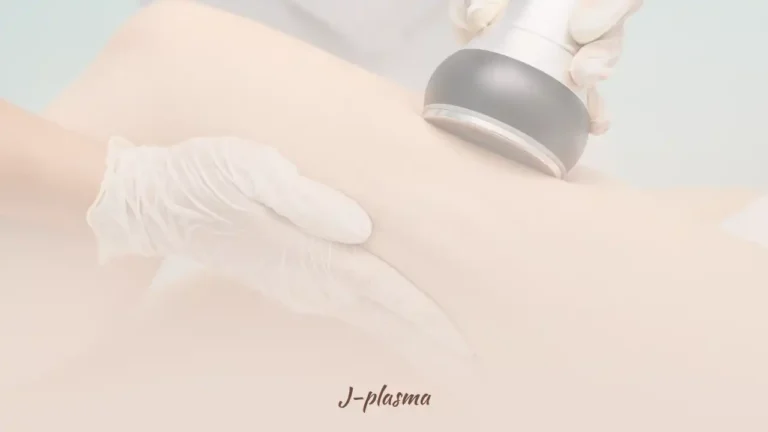Exploring a tummy tuck with a high BMI is a common question for patients with excess skin. However, it’s crucial to understand that your Body Mass Index (BMI) is the single most important factor determining your safety for this procedure. This is a critical safety issue, and this guide explains why.
Why a High BMI Is the Biggest Risk
A tummy tuck is not a weight loss procedure; it is a body contouring procedure. It is designed to remove excess skin and tighten muscles after
significant weight loss. Attempting this large surgical procedure while at a high BMI (generally > 30) doesn’t just affect the aesthetic outcome; it dramatically increases the risk of serious medical complications.
- Poor Wound Healing: A thick layer of fat (adipose tissue) has poor blood supply. This makes it extremely difficult for the long tummy tuck incision to heal, leading to a high risk of infection and tissue death (necrosis).
- Systemic Health Risks: A high BMI is often associated with other conditions (like high blood pressure) that increase the risks of anesthesia.
- Life-Threatening Complications: The risk of complications is significantly higher, especially for deep vein thrombosis (DVT) and pulmonary embolism (PE), which can be fatal.
- Poor Aesthetic Results: A tummy tuck only removes subcutaneous fat (fat under the skin), not visceral fat (fat around the organs). If you have a high BMI, you will still have a “rounded” abdomen from the inside, and the cosmetic result will be disappointing.
Clinic Care Center: Expert Warning
This is a critical question. A tummy tuck is a contouring procedure, not a weight-loss procedure. Most surgeons agree that performing a tummy tuck with a high BMI (e.g., over 30-32) is not safe. It dramatically increases the risk of serious, life-threatening complications, including infection, poor wound healing (necrosis), and blood clots (VTE). For your safety, the medical standard is to reach a stable, lower BMI before surgery.
High BMI vs. Safe BMI: Tummy Tuck Risk Comparison
| Surgical Risk | Patient at Safe BMI (<30) | Patient at High BMI (>30) |
|---|---|---|
| Wound Healing & Infection | Lower risk, better blood flow. | Very High Risk (due to thick fat layer) |
| Anesthesia Complications | Standard risk. | High Risk (stress on heart/lungs) |
| Blood Clots (VTE / DVT) | Standard risk. | Significantly Higher Risk (Life-threatening) |
| Aesthetic Result | Good (muscle repair & skin removal) | Poor (Intra-abdominal fat remains, ’rounded’ look) |
Potential Risks & Realistic Expectations
We must be transparent: there is no “guaranteed” safe tummy tuck with a high BMI. The risks are not small. They include poor wound healing (dehiscence), skin or fat death (necrosis), and severe infection. A ‘plus-size’ tummy tuck is a high-risk procedure that most reputable surgeons will not offer. The realistic expectation is that our clinic will not recommend this surgery until your BMI is in a safer range (typically <30 or <32). The safest path is weight loss first, followed by contouring second.
Frequently Asked Questions (FAQ)
What is the maximum BMI for a tummy tuck?
Most board-certified surgeons will not perform an elective tummy tuck on a patient with a BMI over 30 or 32 due to high complication risks.
Why do I have to lose weight before my tummy tuck?
You must lose weight first to ensure the surgery is safe (reducing liver size, lowering blood clot risk) and to achieve a good aesthetic result.
What are the risks of a tummy tuck if I am overweight?
The primary risks are severe infection, poor wound healing (necrosis), and life-threatening blood clots (DVT/PE).
Will my surgery be canceled if my BMI is too high?
Yes, reputable surgeons will cancel or, more likely, postpone your surgery until you reach a safer BMI.
What is the alternative if my BMI is too high for a tuck?
The safest alternative is to first pursue weight loss, either through diet and exercise or through bariatric (weight loss) surgery.
Can a high BMI tummy tuck cause necrosis?
Yes, a high BMI is the leading risk factor for skin and fat necrosis (tissue death) because of the poor blood supply in thick fatty tissue.
What is a safe BMI for a tummy tuck?
Ideally, a BMI under 30 is considered the safest range for this elective procedure.
Will liposuction solve my high BMI?
No, liposuction is also a contouring (not weight loss) procedure and is unsafe to perform on a large scale for high BMI patients.
Looking for a Safe Path to a Flatter Stomach?
Your safety is our only priority. The experts at Clinic Care Center can help you create a realistic, safe plan to achieve your goals. This often starts with a weight management consultation. Contact us today for an honest evaluation of your options.
Also Read:
Labiaplasty
Vaginoplasty
Abdominoplasty (Tummy tuck)
Six Packs
Arm Lift
Brazilian Butt Lift (Bbl)
Gynecomastia
Thigh Lift
Vaser Liposuction
J-plasma
Mommy Makeover
Penile Enlargement
Scar Revision
Back Lift




